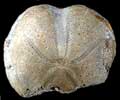The Echinoid Directory
Enallaster d'Orbigny, 1855, p. 181
| Diagnostic Features |
|
|---|---|
| Distribution | The type species comes from the Albian of England. |
| Name gender | masculine |
| Type | Hemipneustes greenovi Forbes, 1852, by original designation. |
| Species Included |
|
| Classification and/or Status |
|
| Remarks | d'Orbigny, A. 1854-60. Paléontologie Française. Terrains Crétacés. Tome 6. Echinodermes, Échinoides irréguliers. 596 pp, pls 801-1006. G. Masson, Paris. 1-32 (July 1854); 33-64 (Oct. 1854); 65-96 (Nov. 1854); 97-128 (Jan. 1855); 129-192 (Mar. 1855); 193-208 (May 1855); 209-224 (Aug. 1855); 225-272 (Nov. 1855); 273-320 (Oct. 1856) pp. 273-352 (Oct. 1856), pp. 353-384 (1857), pp. 385-400 (1858), pp. 401-432 (1858), pp. 433-596 (1860). |
